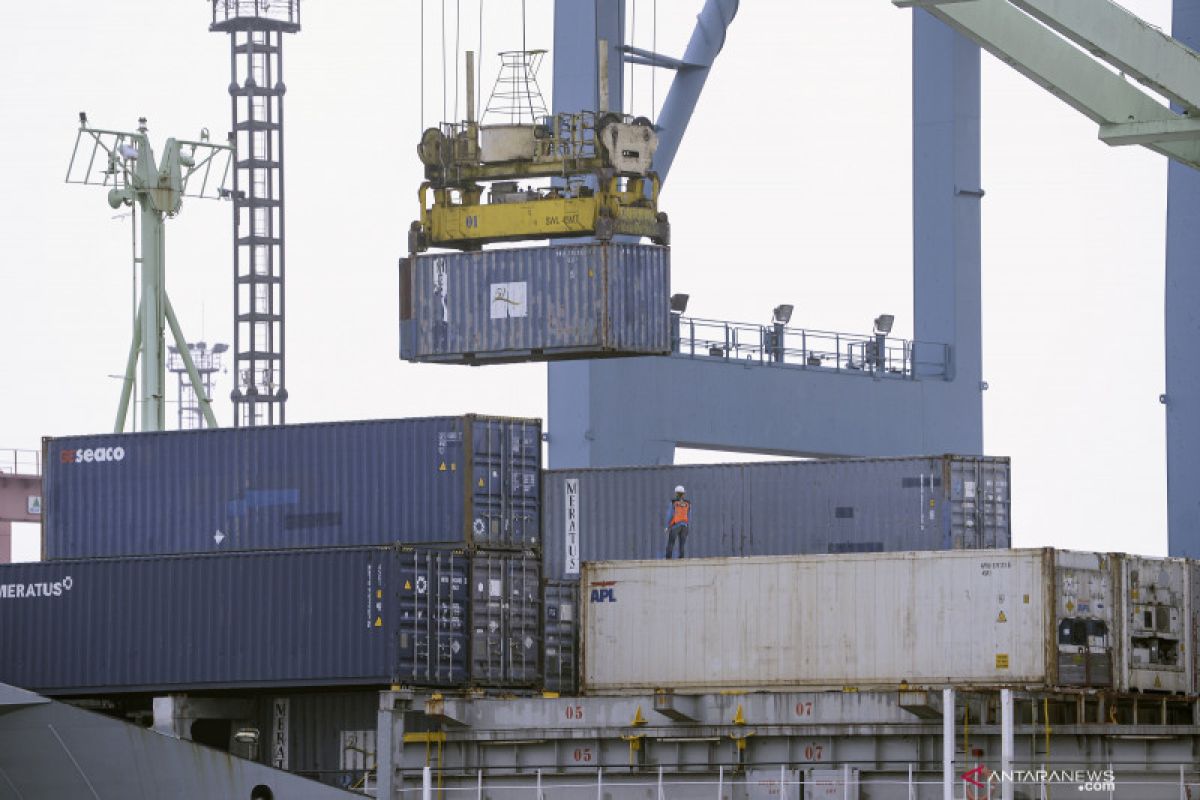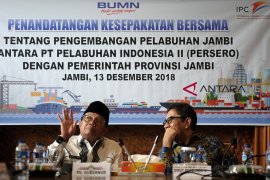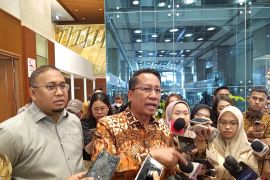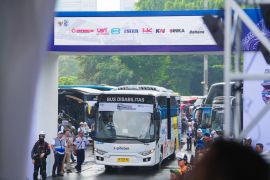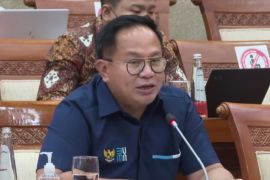The mobility of its people and goods more or less still relies on water-based transportation for which the existence of ports is undeniably important. Moreover, ports are the hubs of trade activities, both exports and imports.
To help drive the nation’s economic growth, ports should be competitive, efficient, and connected to one another. In fact, currently, four state-owned port operators -- PT Pelindo I, II, II, and IV -- handle their own working areas, from the westernmost to the easternmost parts of Indonesia.
Such a condition leads to inefficient services and processes in port handling, particularly for loading and unloading goods, as each company has its own standards and procedures, thereby making ports in the country less competitive as compared to those in neighboring countries, such as Malaysia and Singapore.
Indonesia recorded a relatively higher dwelling time, with an average of 3.5 days, than those in Malaysia and Singapore, with an average of two days and 1.5 days respectively.
According to the 2021 World Competitiveness Yearbook (WCY) conducted by the IMD World Competitiveness Center, Indonesia ranked 37th in the global ranking of the competitiveness of the total of 64 countries.
In terms of the Logistic Performance Index (LPI), the logistics costs in Indonesia were considered high, with approximately 24 percent of the gross domestic product (GDP), as compared to a global average of 13 percent of the GDP.
Related news: Dwelling time at ports down, but logistics costs still high
The government, through the State-owned Enterprises (SOE) Ministry, has taken the decision to merge all state-owned ports -- Pelindo I, II, II, and IV -- by October 1, 2021, in a bid to develop maritime connectivity and standardize port services that will have an impact on its performance and efficiency.
Integrating Pelindo is a must to boost the growth and equity of the national economy, SOE Vice Minister Kartika Wirjoatmodjo stated.
“Indonesia, as a vast maritime country, must have a more integrated shipping and freight channel plan. So far, with four Pelindo companies in different regional operating areas, it is no easy task for us to plan the flow as well as the investment that can support cost efficiency of the national logistics system. This current condition also leads to unstandardized port operational services,” Wirjoatmodjo expounded.
Through integration, Pelindo will have better and strategic control to develop a more holistic plan of port network that leads to decreasing the logistic costs, Pelindo II president director, concurrently Pelindo Integration organizing committee head, Arif Suhartono highlighted.
“The integration aims at focusing on the company’s execution and development more on its business lines,” he pointed out.
Upon integration, Pelindo will be divided into four business clusters: container, non-container, logistics and hinterland development, equipment and port services.
Suhartono is optimistic that business clusters would bolster the capabilities and skills, thereby increasing the customers’ satisfaction through a better service quality and greater efficiency in utilizing the fund source, assets, and human resources.
Related news: Pelindo II to allocate Rp7.6 trillion for capex
Boosting Value and Volume
Pelindo will generate greater value and volume post-merge. With an integrated 97 port branches in 32 provinces, its asset value is projected to reach Rp120 trillion, based on an analysis of a shipping and port expert at the Sepuluh Nopember Institute of Technology, Saut Gurning.
Container traffic in Indonesia is projected to increase by 10 percent, from 17,067 thousand TEUs in 2019 to 25,264 thousand TEUs in 2023.
Meanwhile, on-container cargo is forecast to climb by three percent, from 1,600 million tons in 2019 to 2,200 million tons in 2023.
On the other hand, logistics market growth is projected to rise by six percent, from Rp117 trillion in 2019 to Rp220 trillion in 2023.
“Container cargo business will become the strength, with its potential volume around 17 million TEUs in 2021, positioning the company to be the eighth in the world if it really works. Its volume will continue to touch around 25 million TEUs in 2023,” according to Gurning.
The strategic move of integrating ports is also expected to help slash logistics costs on a national scale by boosting its service productivity, akin to product combined services that can be integrated through specializing various services, he noted.
Furthermore, Pelindo group will become more competitive to neighbor Singapore that had earlier established the international hub port, he added.
Related news: Pelindo I builds cargo terminal ports to support industry
However, the merger will also have an impact on new corporate culture that several employees may not easily adapt as well as the potential overlapping works.
The potential of overlapping works can be minimized by centralizing the plan and implementation in the central area of the company followed up by regional heads.
“Thus, the harmony or performance uniformity, business process, operation system, provision, monitoring, evaluation, ship service payment, cargo and passenger services, and cargo services tend to be similar,” he pointed out.
Deputy Chairman of the House of Representatives' Commission VI Martin Manurung lauded the integration of Pelindo in a bid to boost the national economic growth.
“We laud the efforts of the SOE Ministry that has resumed the plan postponed since a long time. The integration is expected to be realized soon, so that our economy can be more competitive as a result of logistics cost efficiency,” he remarked. (INE) Related news: Indonesia potential for international cargo port investment
EDITED BY INE
Editor: Suharto
Copyright © ANTARA 2021
